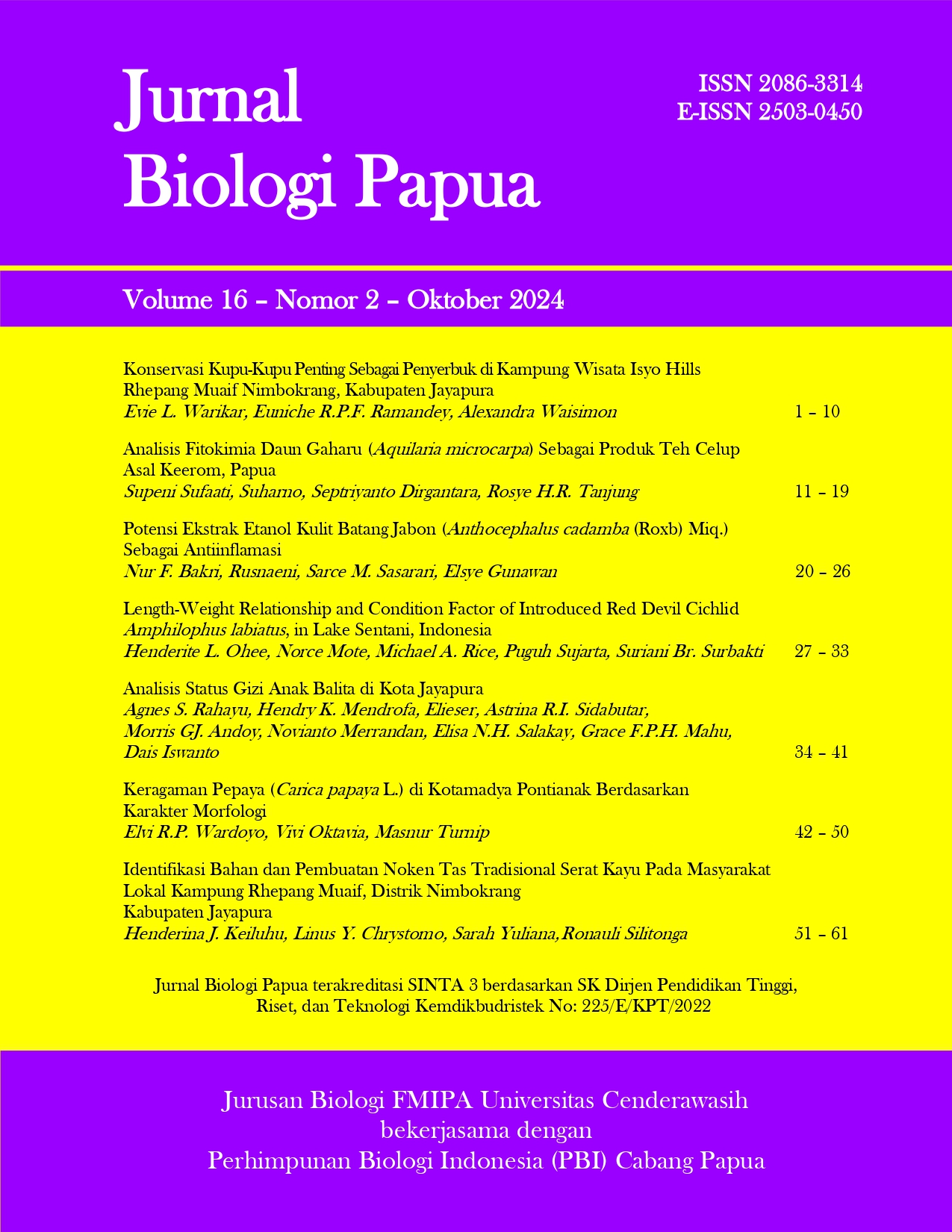Antibacterial Potential of West Kalimantan Local Bajakah (Spatholobus suberectus) Ethanol Extract Against Staphylococcus aureus ATCC 25923 and Methicillin Resistant Staphylococcus aureus
https://doi.org/10.31957/jbp.3438
Abstract
The primary factor contributing to bacterial resistance is the overutilization of antibiotics caused by Staphylococcus aureus ATCC25923. The prevalence of methicillin-resistant Staphylococcus aureus (MRSA) strains possess a significant challenge in both clinical and community environments. Consequently, there is a need to investigate alternative antibacterial sources derived from natural ingredients and local traditional medicines. One such potential source is bajakah Jie Xue Teng (Spatholobus suberectus). The available data on the active component composition and antibacterial efficacy of the ethanol extract derived from bajakah (S. suberectus) in the West Kalimantan region is currently insufficient. The objective of this study is to evaluate the phytochemical composition and antibacterial properties of the ethanol extract derived from bajakah (S. suberectus), a plant species indigenous to West Kalimantan. The antimicrobial activity of the extract will be tested against two bacterial strains, namely S. aureus and MRSA, using in vitro methods. This study employs experimental techniques and is comprised of two distinct phases. The first phase involves conducting a phytochemical test on the ethanol extract of bajakah stem, utilizing the Thin Layer Chromatography (TLC) method. The second phase involves evaluating the antibacterial properties of the ethanol extract of bajakah stem against S. aureus and MRSA, employing the paper disc diffusion method. The research findings indicate that the bajakah ethanol extract derived from S. suberectus, a plant indigenous of West Kalimantan, possesses alkaloids, flavonoids, saponins, and steroids. The optimal antibacterial efficacy is observed at a concentration of 1,000,000 ppm, resulting in an inhibition zone diameter of 9 mm against S. aureus and 10 mm against MRSA.













